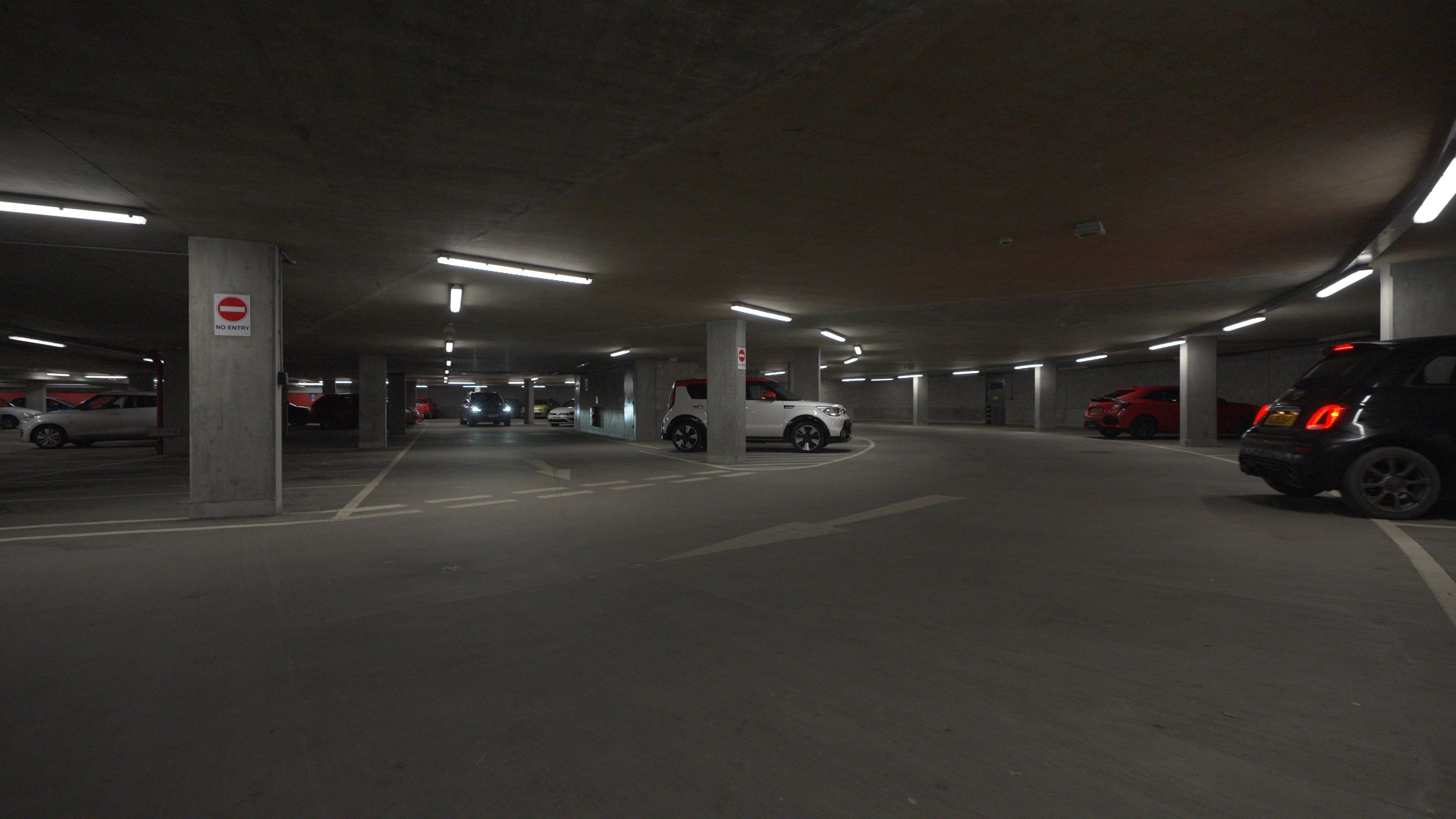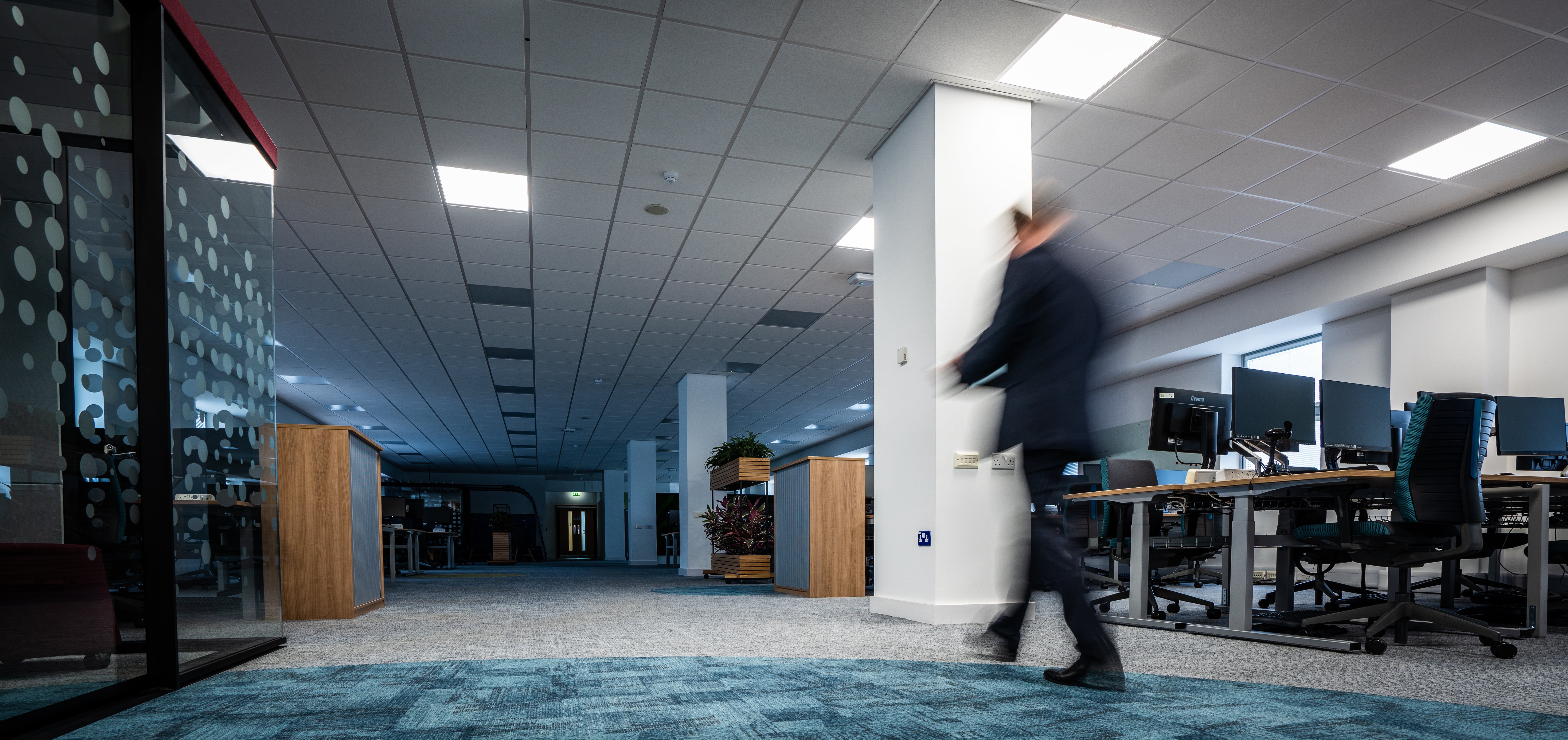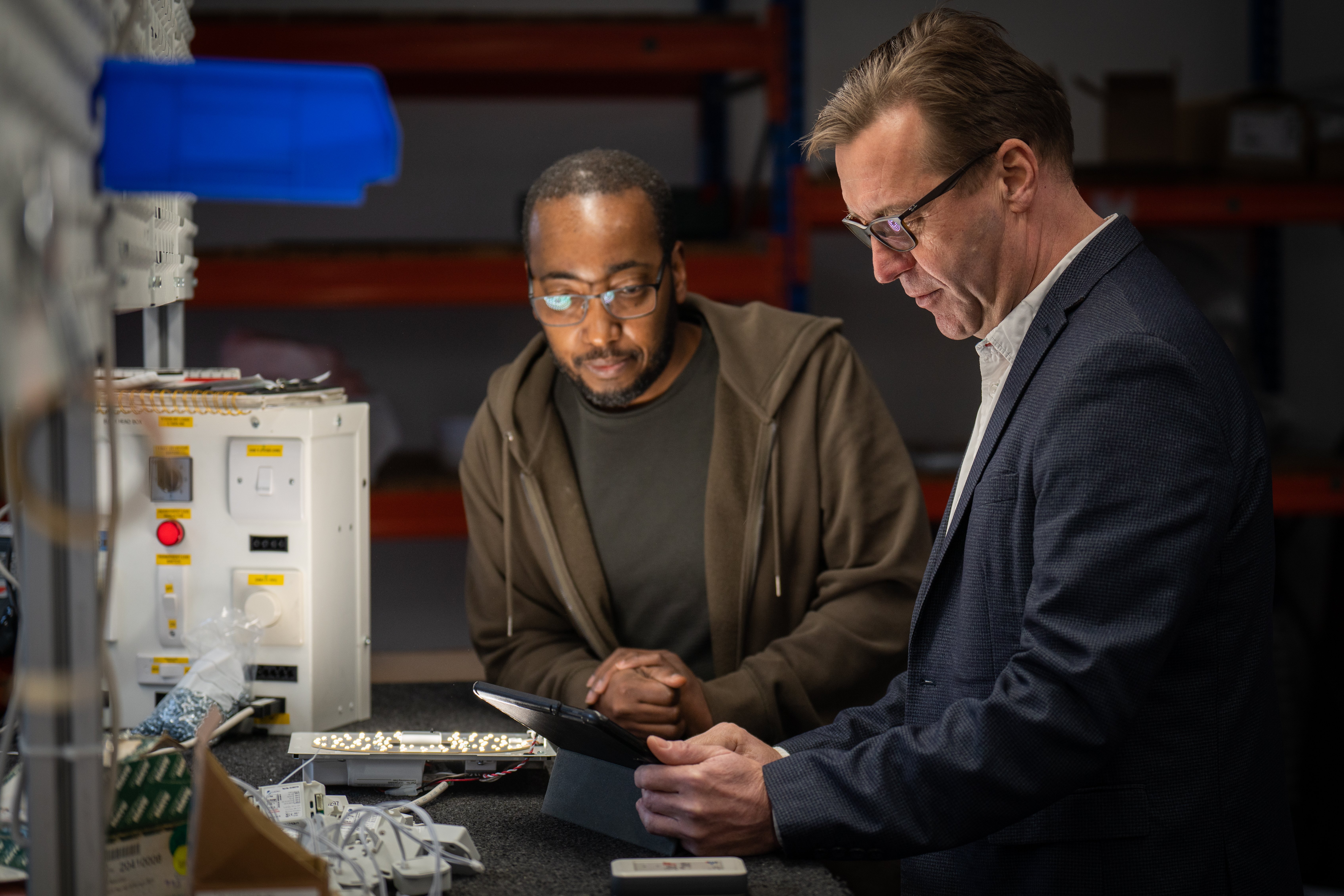A wireless light management system that is simple to install, set up and maintain
Acquired by Glamox in March 2021, LiteIP designs and manufactures wireless light management systems from its base in Southampton, UK. The company’s innovative light management system has evolved over a decade from a simple idea to become one of the most widely used control systems for commercial lighting in the UK – in the Glamox-branded ‘Glamox Wireless Radio’.
With the world going through an energy crisis and with the cost of electricity rising sharply, it is now more important than ever for homes, commercial office buildings and industrial companies to look for more ways of saving energy. Lighting is an area where savings can be made, not only by replacing fluorescent light fittings with more energy efficient LED lighting, but also by improving how the LED lighting is controlled to make additional energy savings – and this is where the LiteIP wireless light management system can really make a difference.
With more than 1,300 clients and over 700,000 luminaires installed at more than 3,000 locations in the UK, LiteIP must be doing something very right for its customers. David Lippold is the founder and Managing Director of LiteIP. He comments: “When you’re trying to sell a commercial lighting solution, most of the time the key factor is the payback calculation. The end user wants to know how much money it will save over time. Typically, our wireless light management system will save between 60% and 90% of energy costs, depending on the application. Any customer that can see payback in less than a year will invariably make a purchase. If payback is less than three years, they still might buy, but if payback is five years, they’re unlikely to buy. The key with the energy crisis is that if you double the cost of the energy, the payback period halves, it’s as simple as that. The energy crisis means that more light management system projects will pay for themselves in less time.”
David cites an example of a multi-story car park. “In a multi-story car park, the lighting tends to be on 24/7. When a car drives in, the lights will switch on to the end of that road or bay. A minute later they’ll probably dim down to 10% of full power. So most of the lights are running at 10% of their power, except when people are actually driving and walking around. At any one time during the day, you’ll probably find 20% of the car park is at full power and 80% are at 10%. During the night, all the lights are either at 10% of full power or they are switched off completely. So in this application, you’d typically achieve 80-90% energy savings and a payback of less than a year. In open plan commercial offices, the energy savings would be less, probably more like 60-70%, but it’s all significant percentages when energy costs are rising.”

The path to success
David Lippold has been involved in light management systems for many years. He bought into a UK-based lighting company around 15 years ago. One of the things he wanted the company to have was its own light management system, so he set about trying to find a suitable supplier. He explains: “You’d think it would be easy to find a suitable system, but it wasn’t. We couldn’t find an easy way of having multiple PIRs [passive infrared sensor] controlling overlapping groups of lights within a room. You needed to install some sort of light management system module that is wired to the PIRs. But what about daylight coming into the room? You really need the lights to dim down at certain times of the day. So you’d also need a daylight sensor near the windows, which also has to be wired back to the control module. You then need to ask, ‘does the daylight sensor have precedence over the PIRs?’ Some kind of logic needs to be defined so that the lights know when to switch off and on, and when to dim. Although this example is not all that complex, it did mean that you started to require the help of a specialist in light management systems.”
At that time, companies started to install single space light management system, whereby a control module would be fitted to control a certain space in an office or warehouse, with a number of PIRs connected to it, with some standard logic applied. “As long as the electrician wired it all together correctly, it should all work straight out of the box. But it was over-complicated, which means mistakes can be made. At this point, I decided to work out how I could devise a control solution that would simplify it all,” says David.
The steps to a solution
A ‘corridor function’ control system for lights then emerged onto the market, which meant you only had a single switchable live wire in, for example, a hotel corridor. Outside each room you would install a sensor. It connected the live wire to another switchable live wire. If anybody activated a sensor the whole corridor would light up. Then the lights would slowly dim down over the next 30 seconds or so to a kind of standby level. And then after, say, half an hour, if nobody had triggered a sensor in the corridor, the lights would switch off completely. “So you had a system here that only required one set of wiring and didn’t need a central control unit. The intelligence was in the light fitting itself. So this gave me some more ideas on how to simplify light management systems,” he adds.

Shopping centre success
David used the corridor function method for some lighting installations in commercial offices and corridors, but then did something similar for a shopping centre multi-story car park. The lighting refurbishment project was huge for his company at the time, with more than 6,000 dimming lights required and 2,000 sensors. He comments: “We installed microwave sensors in the car park and wired it all up. I spent weeks overseeing the project on site, ensuring the electricians were wiring everything up correctly and locating things in the right places. It all went very well and the shopping centre customer was very happy, in fact so happy that they gave us an order to replace all the lighting in eight of their other shopping centres across the UK.”
However, two things didn’t go according to plan on these follow-up projects. The electrical contractor pulled wiring through conduits but damaged some of the existing wires. So it cost the contractor a fortune to repair the damaged wiring and the project went over-budget. They also pulled the wires to the wrong fittings in places and had to rework it. David wasn’t able to be on site this time around to manage it all, so mistakes were made.
“So I now started to think of how we could remove the need for wiring altogether. It was around 2010 and the birth of the Internet of Things (IoT) – the first time there were more connected items in the world than PCs. This made me think ‘What if each sensor just broadcast a radio message?’ Wireless messaging wasn’t exactly revolutionary technology, but it certainly wasn’t in any lighting products at the time. If every sensor could broadcast that it was on, and what if all my relays opening and closing the contacts could hear that message. And what if I could then tune the system to how far you wanted to broadcast these messages. When you walk up to a sensor, it would transmit its message. All the lights that hear the message close their relays and the lights switch on. This means you don’t need any wires between the light fittings. They could perform the corridor function through the driver in the light fitting.”
The big breakthrough here was that LiteIP could then tell the customer that no contractor would even be required on site as we would just replace your existing light fittings with LED equivalents and give you a custom gear tray for each fitting with a dimming control unit inside. A straight swap with no wiring or rewiring required.
Wireless addressable lighting solution
But there was another key advantage. As David states: “Each sensor ended up having a unique identity and could broadcast a message to all of the surrounding lights with its identity. Lights that had subscribed to that sensor would activate, so we could control unlimited overlapping groups. At this time, we also had DALI [digital addressable lighting interface] controls. With DALI, you could set the exact brightness level rather than using a relay and relying on Corridor Function. Adding these together gave us an amazing wireless light management system with more flexibility than DALI systems and with much lower installation costs.

Added benefits for emergency lighting
David then became involved in a lighting project for Ford Motor Company’s European Parts Depot in Daventry, UK – the biggest single footprint building in Europe at the time. He comments: “They liked our control solution but said they also needed to convert half of the existing 10,000 lights to become emergency lights and wanted an addressable system to automatically test it.”
Legislation stated that Ford needed to test these emergency lights once every month to see whether they were working correctly. So each month, Ford would need to employ a team of people to come in, turn the power off, check if the 5,000 emergency lights went correctly into emergency mode. “By installing a light management system with DALI, Ford could then automatically test the lights. With emergency lighting, you have live, neutral and earth wiring, but you also need a permanent live wire. Ford hadn’t got sufficient emergency lighting so were going to have to add this extra unswitched live wire to convert half their lights into emergency lights to comply with the new legislation along with DALI cables to test it. It was becoming a huge project, to rewire the whole site, and replace all the light fittings.”
Another lightbulb moment: because each LiteIP wireless light controls itself, it needs a permanent live, but does not need a switched live. If Ford simply made their lives permanent (by removing the switch), and we added testing and monitoring of the emergency lights into our controllers, they could have as many emergency lights as they needed without any rewiring! “So I could now give Ford reporting of emergency lighting, as well as provide them with all the energy savings and they didn’t have to rewire the site at all. The Daventry site now has the most sophisticated lighting system that money can buy with no rewiring required, and half their lights are now emergency lights!”
“I knew I wanted to sell LiteIP to all the lighting manufacturers. The first five years after we launched the product, nobody was competing with us. Although there are competitors now, they’re not really in our space, they tend to be suppliers of wireless lighting for domestic homes using Zigbee or Bluetooth, but these companies haven’t solved the tricky controls problems, nor do they have the emergency light testing function. Also, the range of their wireless systems are only around a tenth of the range of our system. So this is why we are strong in the industrial and commercial markets, where the spaces are typically much larger. Our solution can be installed with thousands of lights over long distances.”
Eliminate costly rewiring
If companies are thinking of changing their light fittings, most don’t see that as too problematic. But if the project requires rewiring of the building, this could involve tearing down walls, replastering, pulling the ceilings down, installing new conduits, and seeing electricians on scaffolding for months on end. Furthermore, with most lighting installations, the emergency lighting is out of date. “So when these companies come to upgrade their light fittings, their emergency lights have to meet more stringent standards. You can’t do this without rewiring. Therefore, one of the most significant reasons why you would use our system rather than a wired system is that you will not have to rewire the site, which would be costly, often inconvenient and sometimes impossible on older or listed buildings.”

As David puts it: “With our solution, the electrician simply replaces the existing light fitting with ours. He doesn’t need to know about the controls inside. It’s a straight swap over. There’s no commissioning, testing or set up for him. If the light switches on and glows, he’s done his job.”
If the end user needs presence detection, daylight linking, scene controls in the boardroom, the LiteIP solution offers it all. “Users can decide when they move in to a building, what they desire for each room. So there is no risk to a project manager specifying our system. We even have a tablet app that allows the project manager to design and configure the light management system in detail. It’s a bit like creating an interactive drawing of the lighting installation. This includes the type of lights, which lights are linked with others, dimming settings, and so on. The end user maintenance technician or electrician can also use the app if they wish, but it’s mostly used at the commissioning stage.
Online dashboard access
If they wish, the end user can also log into the LiteIP website dashboard. The tablet app is synchronised with the dashboard, which means the maintenance technician or electrician can look at each light on the site and check its settings, how much energy it’s using, the energy usage over time, whether it’s an emergency light, its status, etc. It gathers real time live data from the lights. You can even tweak the settings online if the end user requirements change. You have complete flexibility, as well as the most complete energy saving solution available today.

,(0.5,0.5,1,1)&format=jpg)